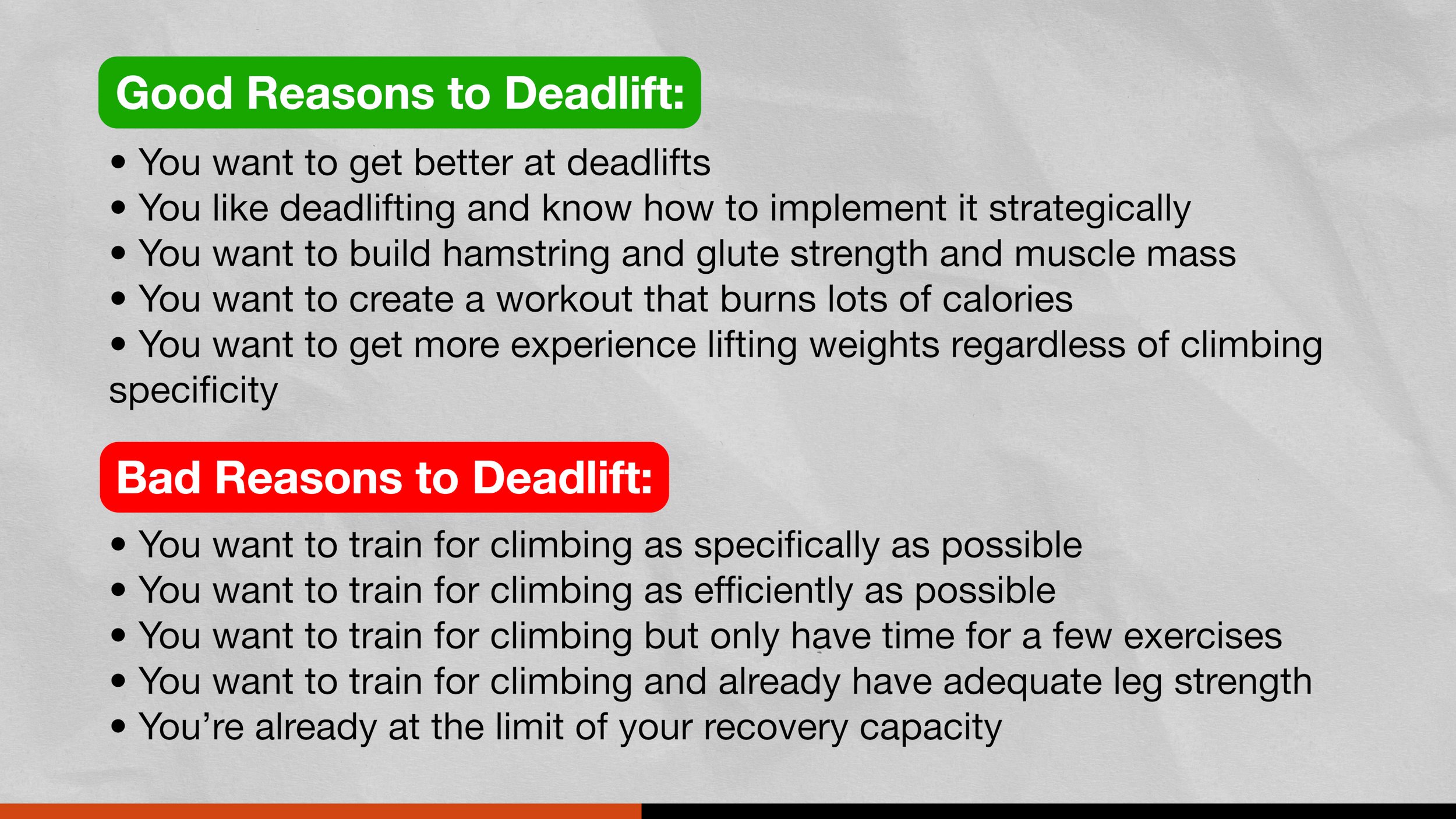Deadlift and Benchpress for Climbers: Collaboration with Lattice and Emil
Hooper’s Beta Ep. 124
Introduction
A little while ago we made a video called “Top 12 Worst Exercises for Climbers” where we suggested the deadlift and bench press may not be a great choice for some climbers. However, we got a lot of comments questioning that advice and believing that deadlifts and bench presses are amazing for climbers. So, who’s right? To find out, we’re going to get two outside perspectives. We’ll have Tom Randall from the Wide Boyz and Lattice give us a coach’s perspective, and then we’ll have my YouTube climber idol, Emil Abrahamsson, give us a super-strong-climber perspective. I’ll also provide my personal breakdown and recommendations, plus we’ll have doctor of physical therapy and tree-trunks-for-legs Michael Gaspari to show us how to actually perform them. Even if you have no plans of doing these exercises, much of this advice will be applicable to other common exercises and training scenarios, so let’s get into it!
Anatomy of Deadlift and Bench Press
Let’s start by quickly learning some of the anatomy behind the deadlift and bench press so we know what we’re working with.
The deadlift, though it may look simple, involves activation of sooo many muscles! This is what makes it interesting to train and, at the same time, quite intense in terms of coordination and energy expenditure. The muscles used will of course depend on the type and style of deadlift, but traditionally the big movers are the glutes, hamstrings, quads, and paraspinal (or erector spinae) muscles. Then to help keep our shoulders in a safe and strong position, various other muscles turn on including the lats, traps, and delts. Our core muscles will also be active if we perform the lift correctly. And finally, the finger flexors, wrist flexors, and wrist extensors are also active to simply grip the bar. So the deadlift pretty much uses everything, right? In some sense, yes, but I want to be clear about something: just because a muscle or group of muscles is being used during a movement, does not mean it is being effectively trained by that movement, and more specifically, does not mean it is being effectively trained for climbing. So before we start thinking that deadlifts must be the ultimate one-stop-shop exercise for climbers, we need to consider what deadlifts are actually training. Just keep that in mind for now and we’ll discuss it in more depth later in the video.
As for bench press anatomy, things are a bit simpler. Aspects of the anterior core will be involved for stability, but the main focus is on the pec major and minor, the triceps, delts (favoring the anterior delt) and the subscapularis (a rotator cuff muscle). The serratus anterior is also involved -- especially if you finish the rep with scapular protraction -- as well as the midback muscles for stabilization of the shoulder blades. Heck, even the lats are involved to help move the bar when it’s at its lowest point! Wild! But, hopefully people aren’t using the bench press to build massive lats. Rather, many climbers use it as a means to build chest strength for a couple different reasons: 1) they heard they need to balance out their pull training with push training to help avoid certain injuries, #antagonists, or 2) they believe the strength gains from benching will help them climb harder, particularly with things like compression moves and mantles. But is that true? Let’s see what Lattice has to say!
How Lattice Use These Exercises
“It’s just a gym exercise, so why would you do them?”
Key things to consider:
How you use them and integrate them into your training needs to be individualized so that they work for you (for a specific purpose)
You need to account for training history and injury history
What are you trying to achieve with these exercises?
Pros:
Motivation (if you love these exercises, that’s a good thing)
Developing strength and pain/discomfort tolerance in certain ranges of motion
Anecdotal evidence that bench press helps people get to one arm pullups
Building muscle mass
Developing tolerance and confidence for lifting heavy weight
Cons:
Can be a waste of time and energy depending on the season (and your intentions)
They both could be new skills you’re trying to learn, which requires time and energy to learn correctly
Requires expensive equipment (not cheap and easy setup)
Muscle coordination/activation may not be relevant to your climbing (low specificity)
What are the indicators for climbers to use this exercise?
Do you know how to do them?
Do you have time and energy to do them?
Do you have the resources to do them?
Final note: it’s important to vary exercises throughout the year because there are other ones that target these muscles, and you should always be aware of your intentions
Super thanks to Lattice for sharing their knowledge. And in case you’re curious about that one-arm pullup anecdote, you might be surprised to learn that the pectoral muscles are actually involved in this movement. The one-arm pull up, especially from a neutral-position, is primed for the pec major muscle to help as we move from a flexed and abducted position, to an extended and adducted one. So having good strength in the pec major is very helpful and the bench press can help build that strength. Neat! But now let’s see what Emil has to say on the matter.
How Emil Uses These Exercises
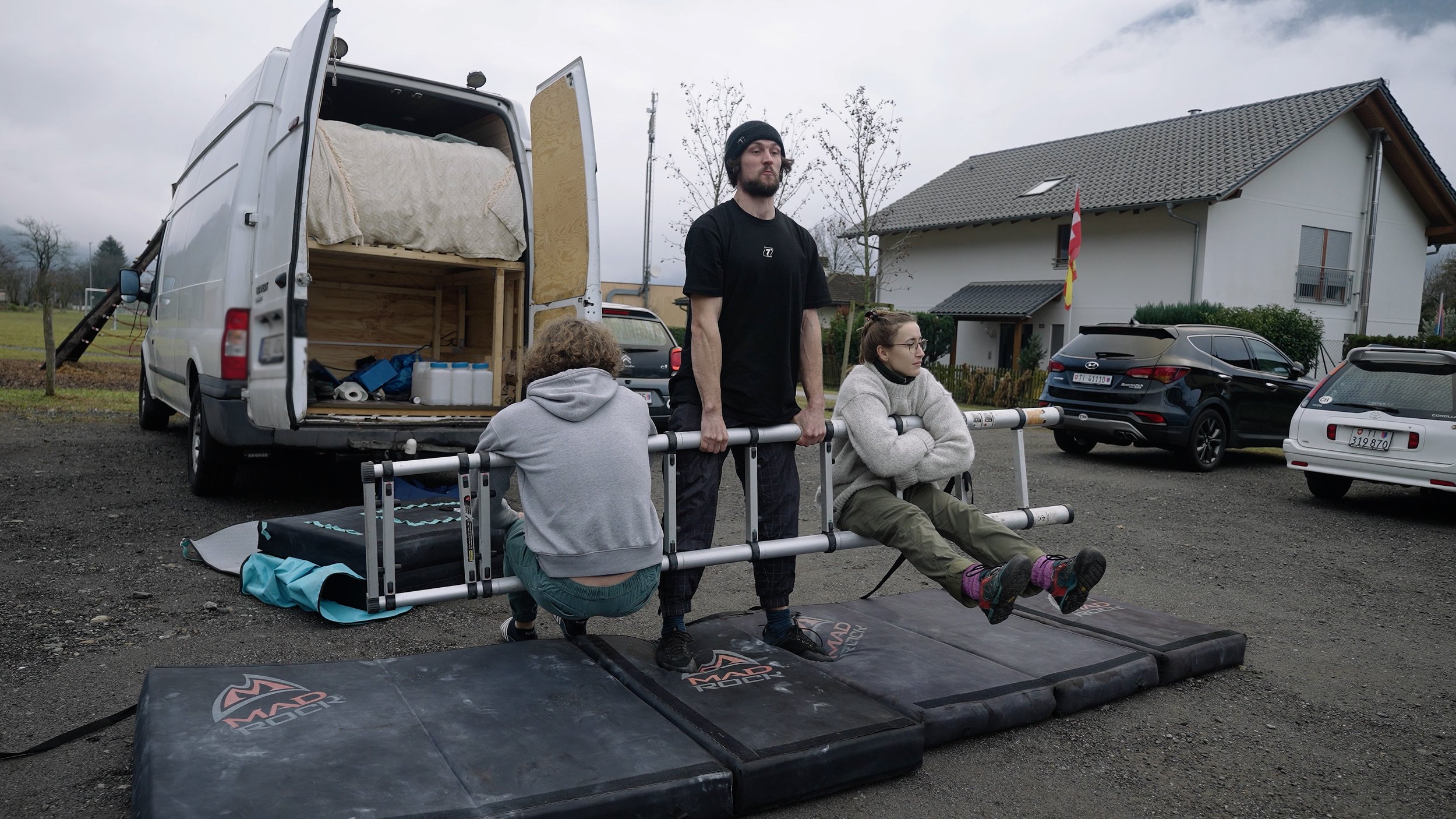

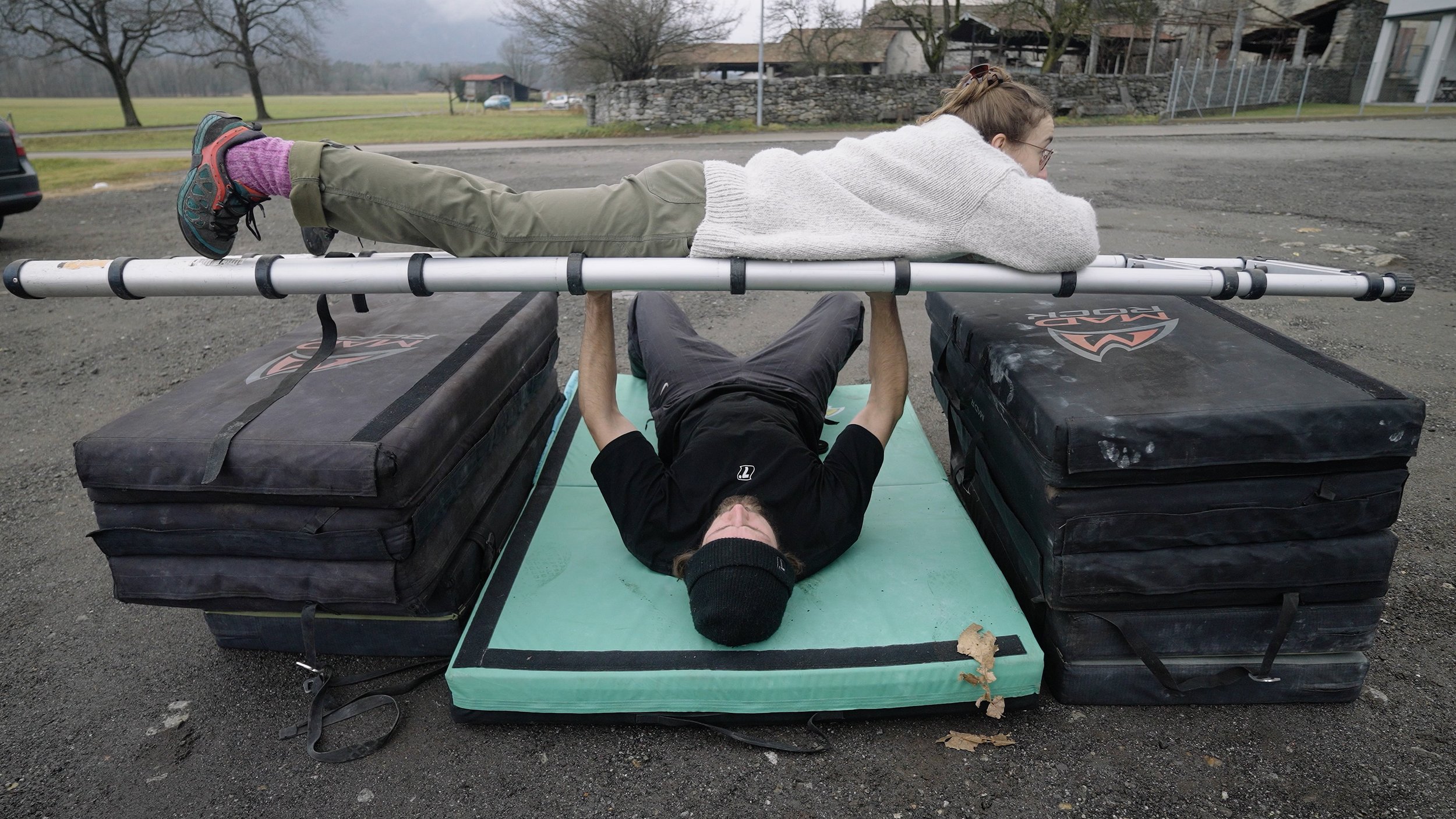
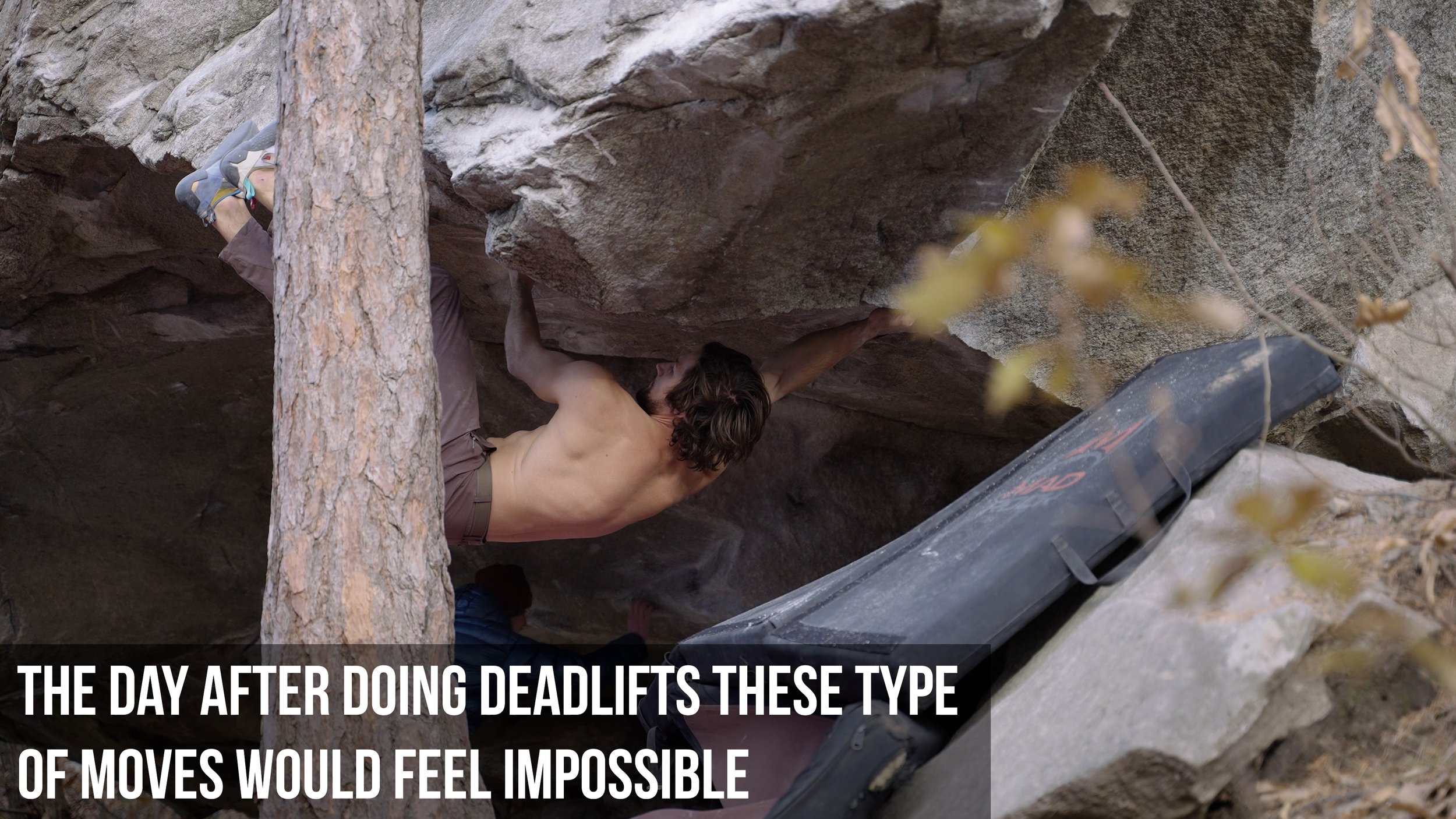
If you want to be a cool high-level climber, refer to them as “DL” and “BP”
I don’t think you need to do deadlifts or bench presses to climb better
Personally think it’s a good way to avoid injury by keeping body stronger overall, making me feel less fragile
If you climb 2-3 times a week, it could be a good way to start or finish your climbing session because you’ll have a fair amount of time to rest in between sessions, but if you’re climbing more than that you probably won’t have enough rest time and gym training can start to really subtract from your climbing
How I incorporate them: I do them when I feel like I need to climb a bit less, so I focus on gym exercises. Don’t feel they’re super necessary when I’m feeling strong and fit, but when I’m not feeling that way, adding in these gym exercises makes me feel more “connected” to my body and fit
Sometimes you need a break from climbing, so that can be a good time to include more gym exercises
Climbing should always be the priority! But if you like these exercises, do them
Jason’s Response
Alright, that does it, I’m definitely integrating the DL and the BP into my daily routine! Guaranteed V15!!
But, in all seriousness, here’s what I actually think of Tom’s and Emil’s opinions.
I love that Tom stresses the importance of identifying your intentions when selecting an exercise and that training decisions are dependent on your unique wants and needs. Tying your training decisions to your goals is absolutely essential for sustainable, enjoyable, effective progress. I also love Emil’s perspective and his practical, healthy mindset about gym training. Having a stronger body overall can definitely be useful for avoiding injuries and feeling good, but neither exercise is absolutely essential to add to your training if you want to climb hard. Honestly, there’s nothing I really disagree with in either of their segments. If these exercises suit your intentions, resources, and abilities, then they can be great choices! But, here’s the problem: how do you know if deadlifts and bench presses actually do suit those things? This is where I think it’s really easy for climbers to get tripped up, so let's try to shed some light on it.
Deadlift
We’ll talk about the deadlift first because it needs a bit more nuance. Just to clarify, if you didn’t see the “12 Worst Exercises” video, we actually didn’t say the deadlift was a bad exercise, just that it has a few characteristics that might not make it a great choice for some climbers. But why is that?
As we know, the deadlift involves a ton of muscles that we also use for climbing, like the hamstrings, glutes, lats, and finger flexors, so you might think, “this must be the ultimate climbing exercise, right? Just hit everything with a deadlift!” Unfortunately, if your goal with training is to get better at climbing, it’s not quite so simple. We need to remember that training specificity is important, and as Tom alluded to, the deadlift is not a movement we really see replicated on the wall. A hip hinge is definitely useful for climbers, but there are many other ways to train a hip hinge that aren't so costly in terms of general fatigue and resources.
So you might think “okay, the specificity of the full movement is kinda low, but the muscles it uses are super relevant to climbing, so it must be good, right?” Well, remember earlier in the video, we mentioned that just because a muscle is used during a certain exercise or movement, does not mean it is being effectively trained for climbing by that exercise or movement. For example, gripping a barbell uses your finger flexor muscles, but it’s not an effective way of training finger strength for small holds, especially compared to something like hangboarding or even climbing. Moreover, deadlifts engage your lats, but they would be a terrible choice for trying to get better pullup strength. And yes the deadlift involves coordination and tension between a lot of relevant climbing muscles, but if you saw our video on core strength vs body tension you’ll know that climbers who lack body tension on the wall are often actually lacking finger, shoulder or back strength. So deadlifts might use a lot of muscles, but that doesn’t mean all of those muscles are receiving an optimal amount or type of stimulus to be trained for climbing. Next time you see someone equating muscle engagement to muscle strengthening, tread cautiously.
So, finally, you might say, “Okay fine, maybe the deadlift isn’t gonna train my fingers and back for climbing the way I want it to, but I know it’s great training for my lower body, so that’s a huge win.” Well, of course, having good lower body strength is useful for climbing. However, again, there are many other ways to train lower body strength that can be more specific to certain aspects of climbing while also being less whole-body fatiguing. Because deadlifts are so taxing, as Emil mentioned they can significantly subtract from your climbing performance. You may feel more fatigued, which can compromise your focus, dexterity, and energy levels during the rest of your training. Also, climbers simply don’t need massive lower body strength, nor do they want to be weighed down by massive legs. Being able to deadlift twice your bodyweight is impressive, but certainly not needed to climb hard.
So where does that leave us? Basically, the deadlift is still an awesome compound exercise if it suits your goals, but make sure it actually suits your goals! Many climbers think deadlifts are going to help their climbing in a way that is actually pretty unlikely. And that’s something we should keep in mind when considering any type of training!
Bench Press
As for the bench press, things are simpler. In my opinion the bench press trains more relevant muscles for climbing than the deadlift. Though I will say I simply prefer ring dips to bench presses because they strengthen essentially the same muscles and are generally more accessible. I would also argue, based on the type of movements we tend to encounter on the wall, that ring drips are a bit more specific to climbing than the bench press -- though I will admit that last point is fairly subjective, and specificity is not the end-all-be-all variable. But ultimately, like we said in the “12 Worst Exercises” video, we absolutely do not have a vendetta against the bench press, and you hopefully know by now that whether or not an exercise is “good” or “bad” is highly dependent on…you!
Deadlift and Bench Demo
If you decide you do want to give the deadlift or bench press a try, here’s how to do it safely and effectively!
Michael Gaspari shows Aleena how to deadlift and bench. - full length video would be the best review for this section!
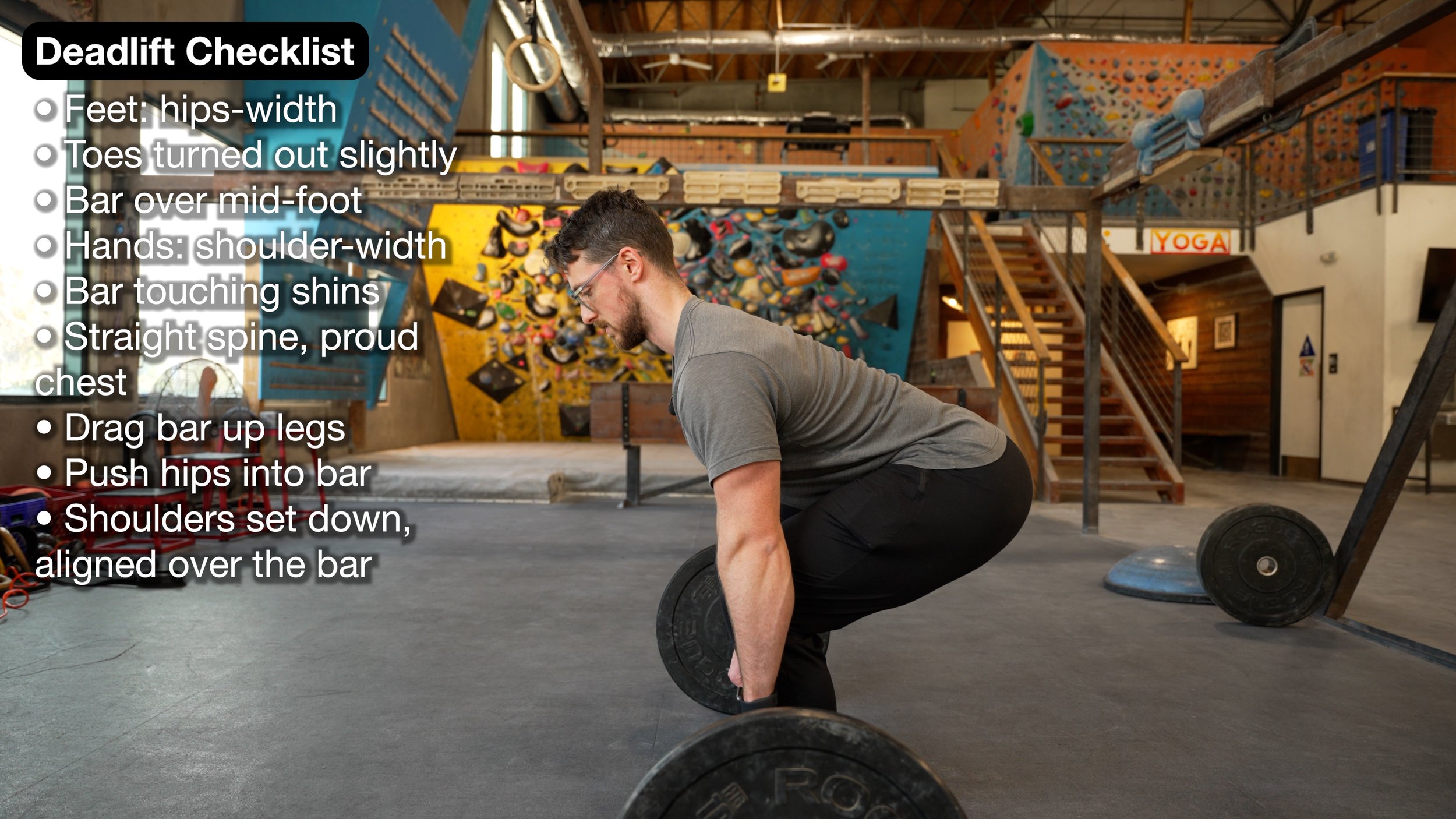
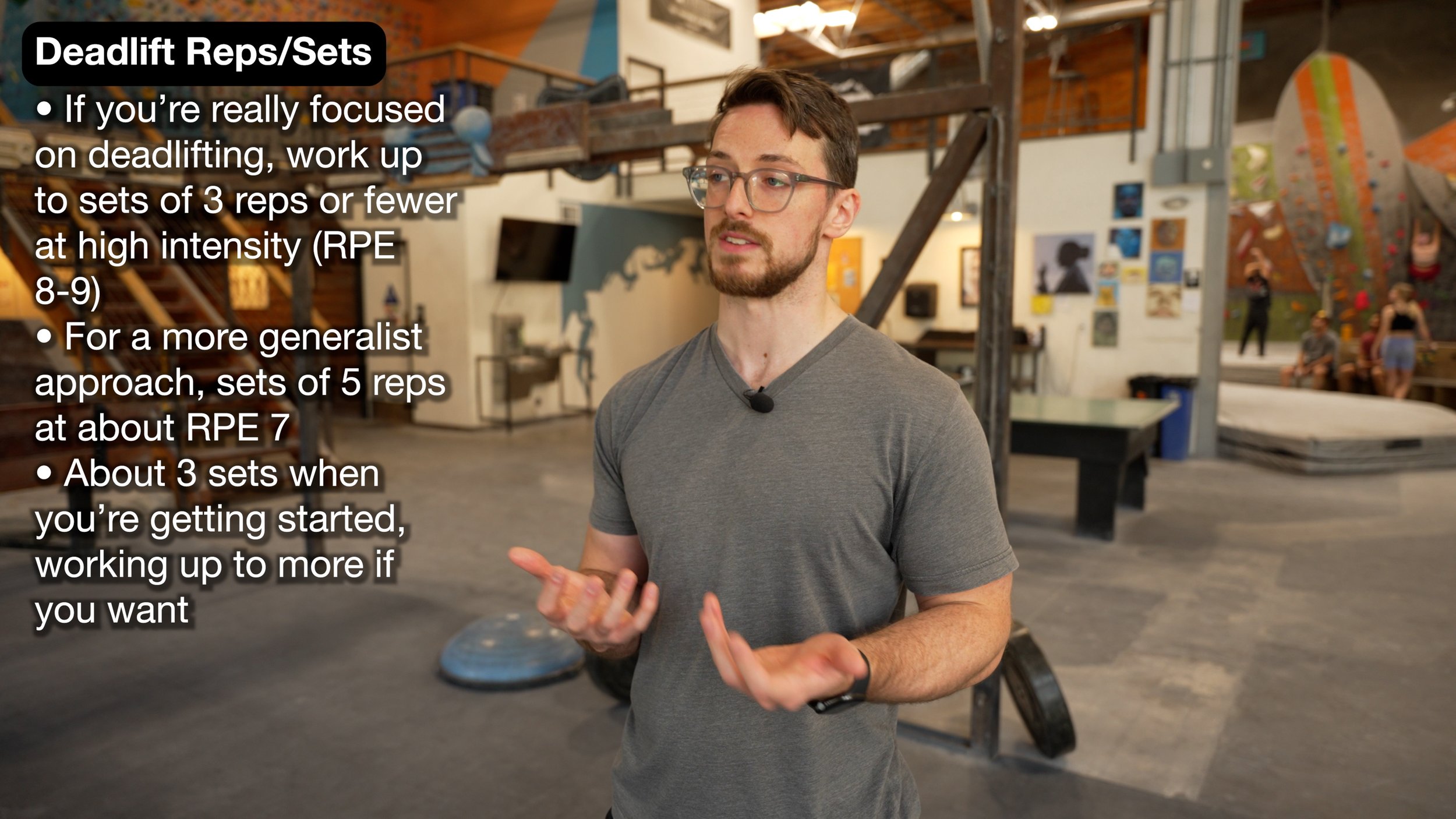
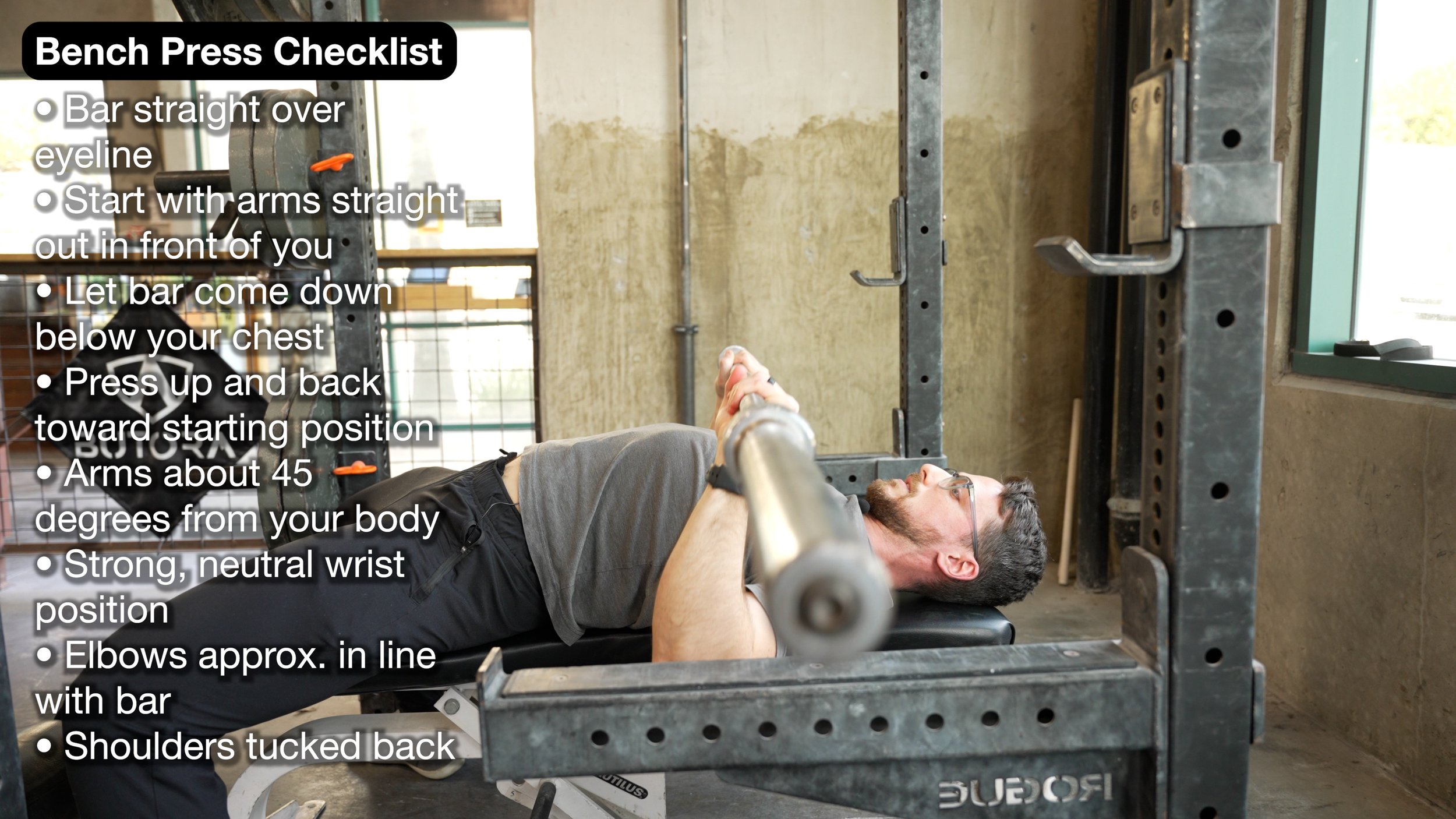
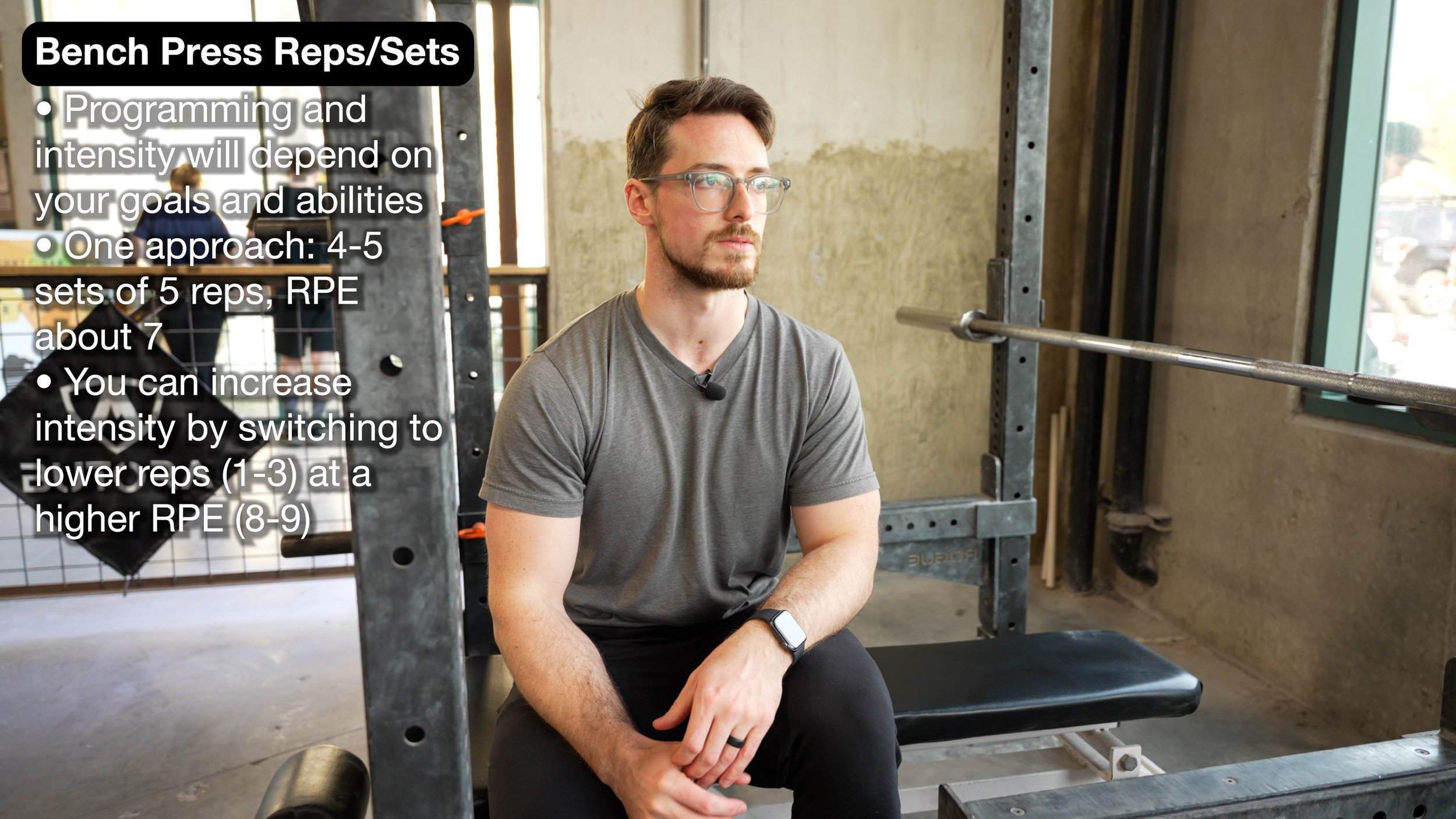
Jason’s Programming Advice
If you want to add in some deadlifts or bench press to your training but aren’t quite sure how to go about it, here are a few recommendations you can try out to get started.
First, try picking a specific period of the year or period in your training to implement deadlifts rather than forcing them in all year long. For example, as Emil pointed out, it can be nice to do them when you’re in “gym training mode” rather than “peak climbing performance mode.” If you have no experience with training cycles, you might look into it a bit further. For example, if you can’t climb at your local crag during the winter, that could be turned into a “training period” where you aim to build strength with gym exercises. Or, if you’re someone who tends to “over-climb” and get injured a lot, establishing periods of time with less climbing but more gym exercises could be a useful endeavor.
Next, try sticking to lower rep counts at higher intensity, rather than doing tons of lower intensity reps and massive overall volume. This way you can somewhat prioritize strength gains over muscle mass gains, though there is inevitably overlap between these and this topic is complex enough to deserve researching more on your own if you’re interested.
Next, remember ego lifting isn’t worth it. Always start with low weight when getting acquainted with a new exercise, especially one that requires a lot of coordination to do correctly, like a deadlift. Ramping up the weight too quickly will not speed up your gains in any worthwhile way. Focus on your form and keep your long-term goal in mind.
Moreover, make sure you do incrementally increase the weight or volume periodically, otherwise you’ll simply stop improving. Progressive overload is key.
And finally, consider exercise variations to keep things interesting or to change the focus. For example, Romanian deadlifts or RDLs really target your hamstrings, while the single leg version adds some core strength and balance components. Some variations may still hit the muscles you’re targeting while being less taxing on the rest of your body. The same can be said for barbell bench press vs dumbbell bench press, the latter of which works more on aspects of shoulder stability. You could even vary between standard bench press and incline bench press.
Summary
Now, we covered a lot of info in this video, so here’s a brief summary to make things easier.
When trying to decide if an exercise is right for you, remember there are multiple factors to consider. [On screen: how your personal training and injury history could affect your decision, what you’re ultimately trying to achieve with your training.]
A few main pros of the deadlift and bench press are that they can provide training motivation, they build strength and mass for many different muscles and for a large range of motion, they help you develop confidence in dealing with high loads, and they can just make you feel fit and healthy.
A few main cons are they can have lower levels of specificity to climbing than some other exercises (mostly talking about deadlifts here), they can be very fatiguing in a way that could diminish your ability to complete other aspects of your training, they require costly equipment, and they aren’t necessary to get better at climbing.
For deadlifts specifically, remember that the specificity is mostly low for climbing, and climbers don’t generally need or want massive leg strength.
For bench press, I prefer ring dips for accessibility and specificity, though that is mostly subjective.
And the last big lesson to remember: just because an exercise uses a particular muscle does not mean that exercise is effectively training that muscle for your intended purpose.
Conclusion
Will you be incorporating either of these exercises into your training now? Do you think one is more useful than the other? Let us know your thoughts down below!
If you want more training and climbing psych, be sure to visit Lattice’s and Emil’s channels. Extra special thanks to them for taking the time to help with this video.
Until next time: train, climb, send, repeat.
Citations
Heelas T, Theis N, Hughes JD. Muscle Activation Patterns During Variable Resistance Deadlift Training With and Without Elastic Bands. J Strength Cond Res. 2021;35(11):3006-3011. doi:10.1519/JSC.0000000000003272
Martín-Fuentes I, Oliva-Lozano JM, Muyor JM. Electromyographic activity in deadlift exercise and its variants. A systematic review. PLoS One. 2020;15(2):e0229507. Published 2020 Feb 27. doi:10.1371/journal.pone.0229507
Saeterbakken AH, Mo DA, Scott S, Andersen V. The Effects of Bench Press Variations in Competitive Athletes on Muscle Activity and Performance. J Hum Kinet. 2017;57:61-71. Published 2017 Jun 22. doi:10.1515/hukin-2017-0047
DISCLAIMER
As always, exercises are to be performed assuming your own risk and should not be done if you feel you are at risk for injury. See a medical professional if you have concerns before starting new exercises.
Written and Presented by Jason Hooper, PT, DPT, OCS, SCS, CAFS
IG: @hoopersbetaofficial
Filming and Editing by Emile Modesitt
www.emilemodesitt.com
IG: @emile166



